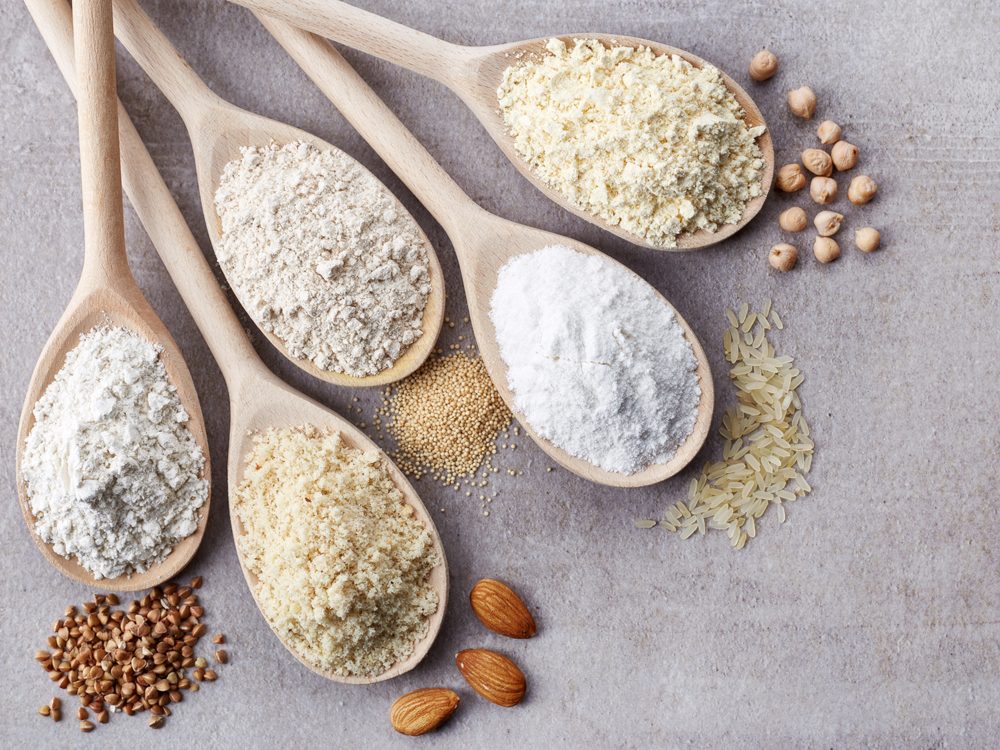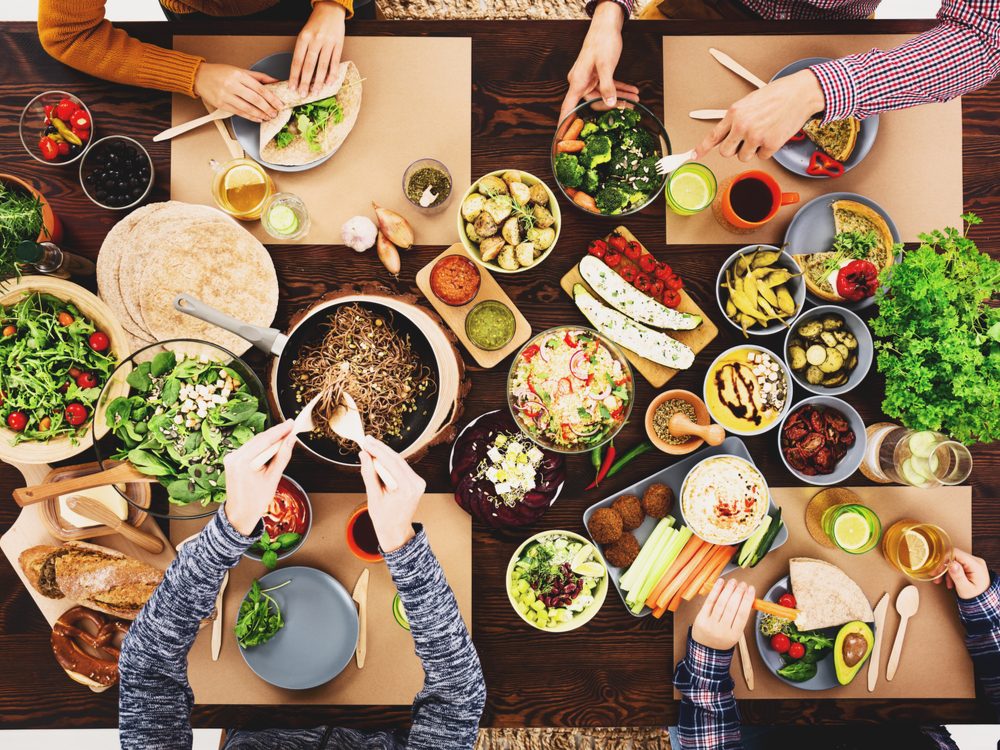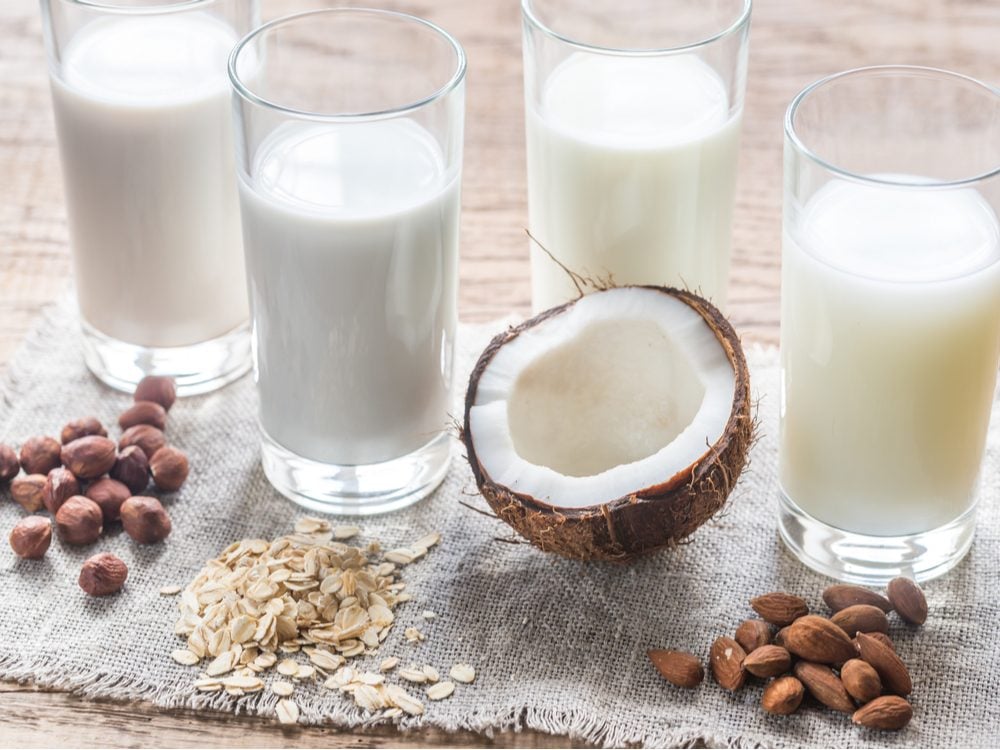
How to be strategic about your dietary restrictions
About eight years ago, I got the call from a doctor telling me I had celiac disease. I had struggled with anemia for a long time, and a blood test indicated that my immune system was overreacting to the gluten in my diet by attacking my digestive system—being unable to absorb iron was one of the side effects. The doctor explained that the only treatment for celiac is cutting out all foods that contain gluten, a protein found in wheat, barley and rye.
It set in that I might never eat bread, pasta or baked goods again, but within just a few weeks of changing my diet, I was pleasantly surprised to discover that gluten-free versions of these foods are everywhere. As I scoured nutrition labels, I also realized I would need to pay as much attention to what I was eating as to what I was cutting out.
In fact, that’s true of all dietary restrictions, says Rosie Schwartz, a Toronto-based registered dietitian and the author of The Enlightened Eater’s Whole Foods Guide. “When you cut out a food, you have to be more aware of getting all your nutrients from your other food,” she says. Whether you’re gluten-free, vegan, vegetarian, lactose-free or dairy-free, it’s important to be strategic about what you put on your plate.

Gluten-free
Why do people go gluten-free?
Individuals who have been officially diagnosed with celiac—an autoimmune disease that damages the small intestine in response to ingesting gluten—must avoid the protein entirely, because even tiny amounts can do harm. Though most people think of celiac as a digestive disorder, many sufferers have no such symptoms and instead experience fatigue, joint pain, migraines or even depression. In the long run, the intestinal damage can also lead to nutrient deficiencies, anemia, osteoporosis, infertility and gastrointestinal cancers.
Only about one per cent of the North American population suffers from celiac disease. But the Canadian Celiac Association reported that in 2013 an additional 22 per cent avoided gluten because they perceived gluten-free products to be healthier or they had a family member with a medical reason to steer clear of the protein. Another six per cent’s avoidance was because of a gluten sensitivity. Also known as non-celiac gluten intolerance, sensitivity can bring on symptoms like bloating, headaches, joint pain, brain fog or diarrhea. Sufferers don’t experience long-term damage from eating gluten, so while they often cut out the protein, they don’t need to be as careful about cross-contamination, says Schwartz. Other people have gone gluten-free thinking it will help them lose weight or because they’re under the impression that gluten is unhealthy—neither of which is true, according to Schwartz.
Is it healthy?
For those who have celiac disease, a gluten-free diet is imperative to ward off long-term health complications. And it can be nutritious, too. “If you look at most of the whole foods that make up a balanced diet, they are naturally gluten-free,” says Andrea Falcone, a registered dietitian and certified fitness professional in Mississauga, explaining that fruits, vegetables and unprocessed meats are all naturally free of gluten. Both she and Schwartz warn that pre-packaged gluten-free foods are often lacking in nutrients and instead are full of extra salt, sugar and other unwanted ingredients in order to make them more palatable.
How to plan for a balanced diet
The first step to going gluten-free is learning what to eliminate. “Gluten is right through our food supply,” says Schwartz. “There are just so many sources of gluten that people need to be aware of.” In addition to avoiding anything that contains barley, rye and wheat (and all of its varieties, such as spelt and farro), you’ll also need to watch out for ingredient lists that include the word “malt” or foods that might be contaminated with gluten-containing ingredients (such as those that “may contain wheat” or are prepared in restaurants where cross-contamination is likely).
But by cutting out those foods, you’re eliminating major sources of fibre and B vitamins. You may also get less iron, since foods like pasta and cereal are often fortified with the mineral, says Falcone. Schwartz recommends replacing gluten-containing grains with whole grains like quinoa, buckwheat and amaranth in order to get fibre and B vitamins. Most people should be able to absorb their nutrients from their diet without needing a supplement, assures Falcone. Eating a variety of whole foods, including leafy greens, meat and eggs, can also help prevent deficiencies in iron and B vitamins.
Don’t miss out on these healthy alternatives to pasta!

Vegetarian or vegan
Why do people go vegetarian or vegan?
Meat is one of the most common foods people cut from their diets. According to a 2018 survey from Dalhousie University in Halifax, 7.1 per cent of Canadians are vegetarian and 2.3 per cent are vegan.
Because more than half of them are under age 35, experts believe that meatless lifestyles are on the rise. How these terms are defined depends on the individual. For instance, some self-identified vegetarians follow a pescatarian diet and still eat fish, while others shun any animal-based ingredient, including gelatin. Vegans typically eliminate all animal products, including eggs, dairy and even honey. The decision is often an ethical one: wanting to spare animals or ease the burden on the environment, since livestock farming requires tremendous amounts of water and feed, and releases greenhouse gases. Some people believe cutting out animal products will help them lose weight, but that’s untrue, says Schwartz.
Is it healthy?
“It depends on what they’re substituting in,” says Schwartz. “If they’re not focusing on balancing their meals, then it can have a negative effect, even on weight.”
For example, if vegetarians and vegans don’t make a concerted effort to get enough protein, they won’t be satiated and will have trouble maintaining their muscle mass, which keeps their metabolism running strong. And, as with gluten-free items, many convenience foods tailored to vegan and vegetarian diets are short on nutrition and high in sodium. Consuming a wide variety of whole foods is key.
How to plan for a balanced diet
Schwartz suggests spreading out protein sources—like beans, lentils, nuts, seeds, tofu (and eggs and dairy, if you eat them)—over the day. Otherwise, “Your blood-sugar levels can fluctuate and you may become tired,” she says.
Shellfish and red meat, some of the richest sources of iron, are off the table, so getting enough of the mineral can be difficult. While eggs, legumes, nuts, seeds, leafy greens and whole grains all contain iron, our bodies don’t absorb plant-based iron as well as the one from meat. Fortunately, vitamin C can help with that; try pairing these foods with peppers, tomatoes, berries and other foods rich in vitamin C.
Zinc, largely found in oysters and red meat, can also be in short supply, so make an effort to consume nuts and legumes, and cook them with onions and garlic to encourage absorption, says Schwartz. If you’re vegan, you’ll also need to seek out non-dairy sources of calcium, like seeds, almonds and leafy greens. And if you’re not partaking in fish, get omega-3 fats from foods like walnuts and flaxseed.
Certain vitamins remain a concern even when eating a balanced diet and may require a different approach. Vitamin B12 is naturally found only in animal foods like meat, milk and eggs. Cereals, plant-based milks and nutritional yeast are often fortified with B12, but if you aren’t consuming many of those, it’s a good idea to talk to a doctor or dietitian about whether you need a supplement. And while Health Canada recommends getting 600 IU (international units) of vitamin D a day—or 800 IU if you’re over 70—it’s particularly important for vegans because they aren’t drinking fortified milk.
Find out the surprising amount of vegetarians and vegans who go back to meat.

Lactose-free or dairy-free
Why do people go lactose-free/dairy-free?
More than seven million Canadians are lactose intolerant, meaning they lack the enzyme needed to break down a sugar called lactose, found in milk products. Side effects can include bloating, diarrhea and cramping. The severity of someone’s symptoms will likely influence whether they cut out all lactose or still eat dairy in minimal amounts. For example, many lactose-intolerant individuals can tolerate yogourt because the bacterial cultures help break down the sugar.
A dairy allergy is much more serious. It occurs when your immune system overreacts to a protein found in dairy products, the consequence being anything from a rash to digestive symptoms or even anaphylaxis. Sufferers must read labels diligently to avoid ingredients such as casein and whey.
Is it healthy?
Going lactose-free isn’t likely to change your nutritional intake much. But if you’re cutting out dairy altogether, you’ll be eliminating many key nutrients—like protein, calcium, magnesium and vitamin D—and it’s important to replace those. While there are many dairy-free options on store shelves, they’re not always nutritious. “There are some milk substitutes out there that are low in protein and have lots of sugar added,” says Schwartz.
How to plan for a balanced diet
If you’re lactose intolerant, you can still consume lactose-free milk and cheese, which have an enzyme added to break down the sugar. If you’re dairy-free, however, you’ll be making more drastic changes. There are a growing number of plant-based milks available (soy, almond, coconut, oat, pea), but only some are naturally rich in protein or fortified with vitamins and minerals. Schwartz recommends checking the label to find an option that’s comparable to cow’s milk in terms of protein, calcium, magnesium, B12 and vitamin D content.
Other sources of calcium include almonds, tofu, tahini and leafy greens; taking a vitamin D supplement will allow you to better absorb the calcium. Meanwhile, avocados, nuts and legumes can help with magnesium needs, and if you eat meat and eggs, you’ll be covered for protein as well as vitamin B12.
Thinking of making diet adjustments of your own? These are the health symptoms you should never ignore.